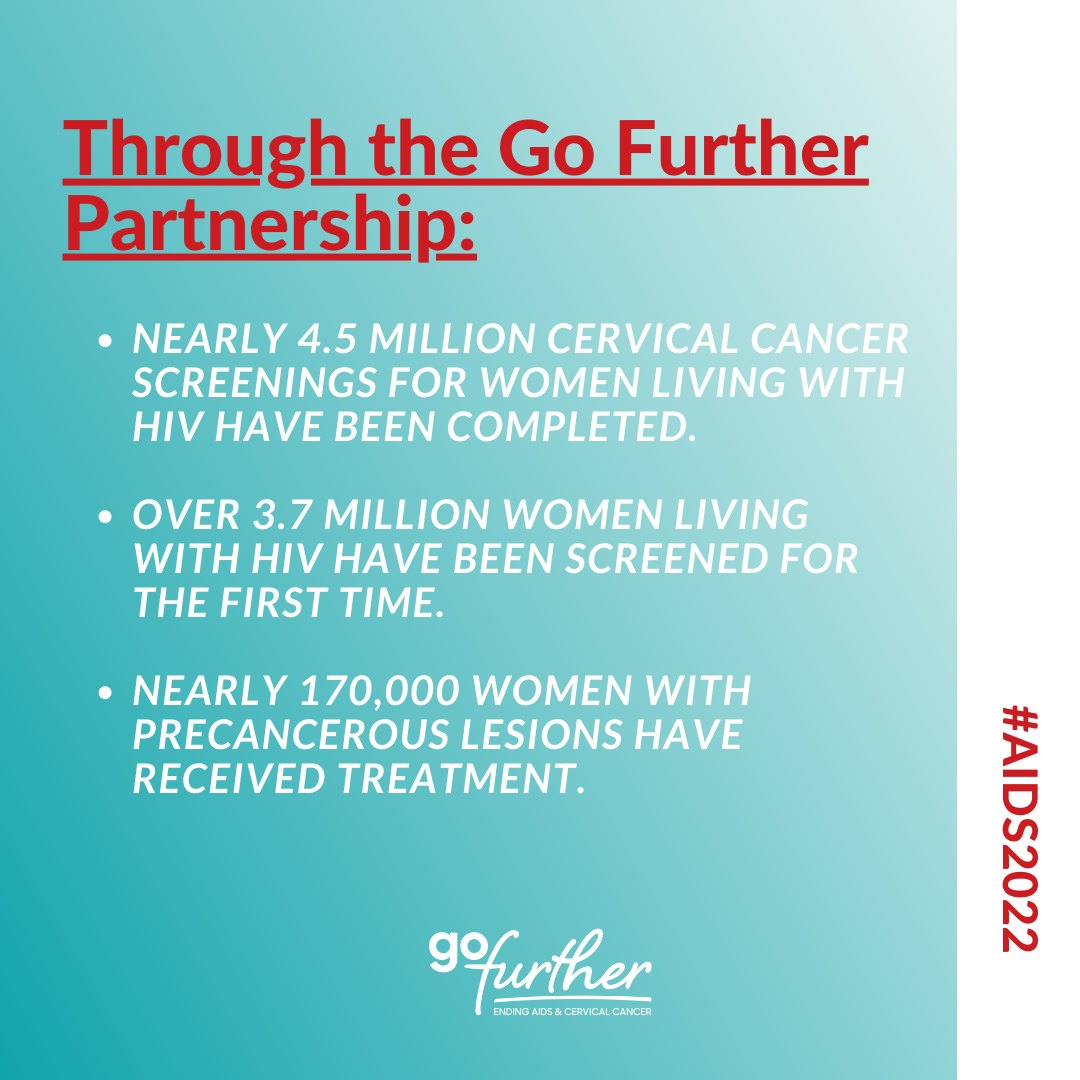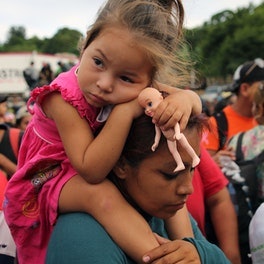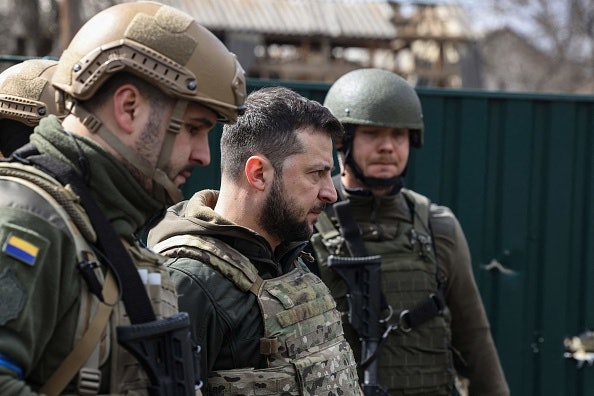For the first time, a national convening, led by the George W. Bush Institute Military Service Initiative, brought together public and private sector leaders to address the full range of issues affecting transitioning veterans.
Recommendations for the Administration and Congress
Establish an office in the White House for veterans and military families that can also be used as a central convening location for each task force.
The VA and DOD healthcare system can be modernized through enhanced public private partnerships, realigned authorities, and regulations, improved policies and expanded outreach efforts.
They can also work to connect veterans to community organizations and resources to provide services that make veterans whole i.e. education and employment.
Ensure long-term viability of the GI Bill, and improve pre-transition activities and veteran readiness by expanding apprenticeships, fellowships, internships and identify opportunities to customize the TAP program.
“Stand-To,” conducted in conjunction with 70 partner organizations, brought together more than 300 individuals from major corporations, non-profits, higher-education institutions, philanthropic entities, think tanks, federal agencies, congressional leaders, and community organizations to synchronize efforts and improve veteran transition outcomes with a focus on health and wellbeing, education, and employment.
These are folks who got a Ph. D. in life without having to go to college. They have seen a lot, they have learned teamwork, discipline and skills. They have been under pressure and the question is, can we help them if they need help?
President George W. Bush
During Stand-To, the participants committed to a common framework that identifies three areas of a successful veteran transition: Achieving optimal health and wellbeing, access to meaningful education and training, and finding meaningful employment opportunities.
In order to meet the needs of transitioning veterans, the participants made the following pledges:
- Integrate health and wellbeing, education, and employment work and establish measurable objectives for each of those areas.
- Establish a system to improve data collection, sharing, and analysis within each area of need, and across veteran transitions.
- Enhance public and private partnerships
- Healthcare providers, nonprofits and community organizations must work together to advance health and wellbeing by improving and streamlining service delivery, integration, and coordination of effort across all sectors, from the national to the community level.
- Leaders of higher education must foster a national effort for veteran recruiting, admissions, on-campus interaction, and education success and career placement.
- Businesses must commit and take action to codify a new era in veteran and military spouse employment by: improving corporate recruiting and hiring, onboarding and integration and retention.
Key Goals
HEALTH AND WELLBEING TASK FORCE
Related papers
Enrichment Equation: Enrichment = Health + People + Purpose
Combating the Invisible Wounds of War
When men and women in uniform return home from war, many feel a loss of purpose and identity, and have visible and invisible injuries that require treatment. Veterans and military families also often look for ways to serve their communities and connect with fellow veterans. Achieving optimal health and wellbeing is multi-faceted, and while not exhaustive, the Stand-To health and wellbeing task force focuses on: physical health, mental and emotional health, purpose and identity, and community and relationships.
The task force outlined the below objectives as next steps:
- Provide improved and streamlined service delivery to veterans, their families and caregivers.
- Healthcare providers, nonprofits and community organizations must work together to improve integration and coordination of efforts from the national to the community level.
- Integrate health and wellbeing efforts with employment and education efforts.
- Work with government agencies to modernize the VA and the DOD healthcare system.
- Address knowledge gaps and improve data, studies, and evaluation sharing among organizations.
Col. Miguel Howe, Director of the Military Service Initiative
By fostering a successful transition, we not only ensure our veterans and their families lead full and meaningful lives, we ensure we leverage a national cadre of determined and experienced leaders who will serve in new ways and with renewed purpose for the decades to come.
EDUCATION AND WORKFORCE READINESS TASK FORCE
Related papers
I am a Post-9/11 Student Veteran
Infographic: Student Veterans — A Valuable Asset to Higher Education
2016 Veterans Civic Health Index
Nearly half of the veterans transitioning enter higher education services, and two-thirds of them are first generation college students. However, there is a common misconception from many institutions that those who have served in the military are poor students who do not graduate. With programs like Vocational Rehab and the post-9/11 GI Bill lowering the cost barrier for veterans to attend school, the onus now falls on the education sector to step up and recruit this valuable population.
The task force outlined the below priorities as next steps:
- Foster a national effort for veteran recruiting, admissions, on campus interaction, education success, and career placement.
- Collect veteran enrollment, graduation, and career placement data and share best practices, and research.
- Continue working with the government to modernize the GI Bill and ensure its long-term viability.
- Improve and streamline workforce readiness opportunities in training and certification that better link the public and private sector.
- Integrate education efforts with health and wellbeing and employment efforts.
EMPLOYMENT TASK FORCE
Related papers
Veteran Employment Task Force: Challenges and Recommendations
The public, private, and non-profit sectors must recommit to the employment of transitioning service members, veterans, and military families. To ensure veteran success, there are three interconnected processes across the veteran hiring life cycle that need to be addressed: recruiting and hiring, on-boarding and integration, and retention. A lack of data makes it difficult to pinpoint and understand veteran economic performance and how businesses can achieve better corporate performance. Veteran candidates are also not provided the appropriate tools for success, such as effective on-boarding and integration.
The task force outlined the below priorities as next steps:
- Develop a marketplace of resources and data that businesses can use to improve recruiting, hiring, onboarding, and retention.
- Establish systems to improve data collection, sharing, and analysis.
- Improve pre-transition activities and transitioning service member/veteran readiness by expanding apprenticeships, fellowships, internships and identify opportunities to customize TAP.
- Enhance public/private partnerships to improve veteran employment outcomes.
- Integrate employment efforts with education and health and wellbeing efforts.
We are a fortunate nation to have had millions volunteer in the face of danger. And, I view our vets as a tremendous national asset.
President George W. Bush































